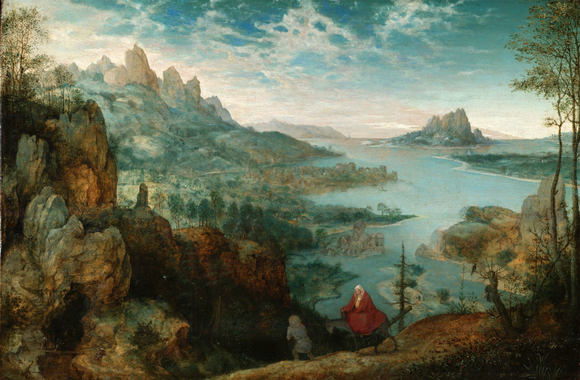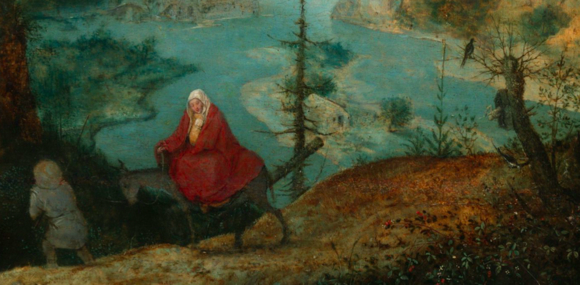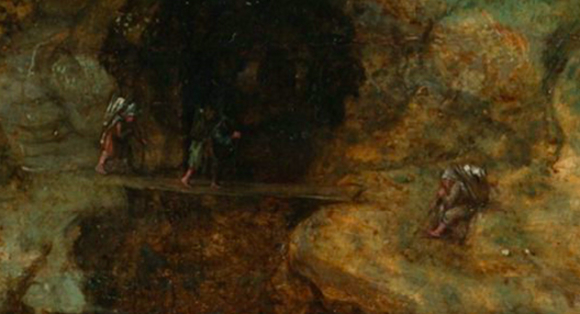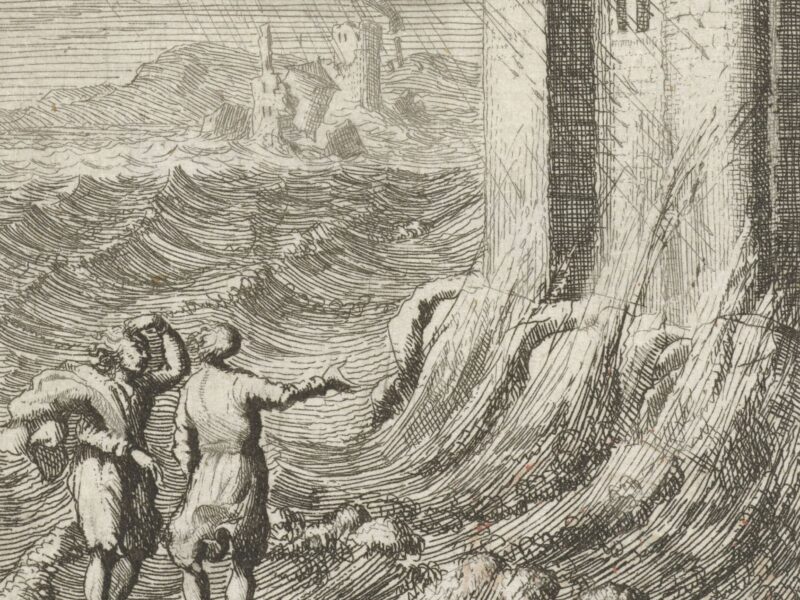
Advent Art: Landscape with the Flight into Egypt, by Pieter Bruegel
By Br Gabriel Theis, O.P. | In this Advent art post, Br Gabriel Theis reflects on Pieter Bruegel the Elder’s painting Landscape with the Flight into Egypt (1563) and its implications for our attitude towards Advent.
The motif seems all too familiar, and maybe not related to Advent itself: We see the Holy Family after Jesus’ birth on their flight to Egypt (Mt 2:13–14). Pieter Bruegel the Elder’s depiction of the scene, which I saw in an exhibition in Vienna, is set in an alpine landscape familiar to the artist. Bruegel’s interpretation follows the conventions of his time: While the broad and beautiful landscape captivates our attention, the small protagonists can easily escape our eyes. The naiveté and plainness of this depiction deceives us though: Bruegel’s famous Wimmelbilder or ‘swarm pictures’ require special concentration for their hidden details. This may remind us of our contact with biblical texts or matters of faith in general: While they appear rather simple and straightforward on the surface, we discover more and more depth by reflecting on them time and time again.
In the case of the Flight into Egypt, Bruegel hides some details that stir up the superficial tranquility of the scene and, I think, our approach to Advent as well. One of the trees that the Holy Family has just passed contains an idol falling to the ground: Bruegel thereby hints at an apocryphal story about Jesus’ arrival at an Egyptian temple, where all idols fell to the ground, thus bowing to His Divinity. By coming into our own lives, Jesus necessarily also overthrows all false idols, concepts and expectations – everything that wants to force Him into our little schemes, even if it is just our longing for the wrong kind of peace. Yes, Advent exists to console us – but not with the riches of this world, but with the poor boy in the crib, who “became poor, so that by His poverty you might become rich” (2 Cor 8:9). We find truth not in vain kinds of philosophy (Col 2:8) or cleverly devised myths (2 Pet 1:16), but in Christ alone; and our lives should give testimony of our bowing to His truth that often contradicts our worldly standards.

Another example of this ‘stirring-up’ of our desire for harmony and cosiness is found even closer to the Holy Family: Two lizards symbolise the evil that fights against Christ from the moment of His birth, and which he has to defeat in order to bring harmony and peace. We should understand Advent as a time in which our remembrance of Christ’s arrival in the world encourages us to take up our own fight against all restlessness and wickedness in our lives.
This will not work without an honest effort: And if we look closely, we see Joseph struggling to keep the donkey on his path, as we often fight against our own limitations; we also notice how Our Lady has sunk down on the donkey, obviously exhausted from the tiring journey. We are often tired of personal and professional duties and obligations; and looking at the vast landscape in Bruegel’s painting, we might feel discouraged by the long path that lies ahead.

However, these emotions of emptiness and darkness must not have the final say. We are not alone on our paths: Bruegel hides three other wanderers on the left side of his painting, which pave the way for the Holy Family; and most of us know someone who helps us carry the burden of life, and many of us bear at least a small part of someone else’s load. And of course, we have Christ, who carried all our afflictions when He put the cross on His shoulder; He came into this world to take our burden from us and to give us His own yoke, which is light and easy (Mt 11:30).
In this time of Advent, when we remember and look forward to His coming, let us stand up and raise our heads, because our redemption is drawing near (Lk 21:28).
Image from Wikimedia Commons.
MORE ON: ADVENT
Other posts in the series:


